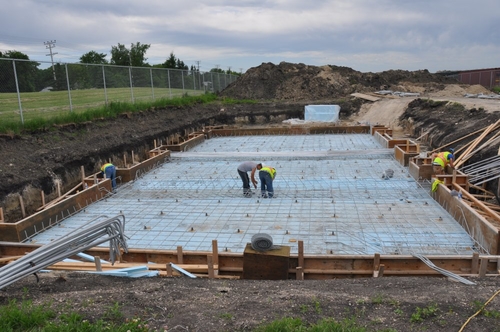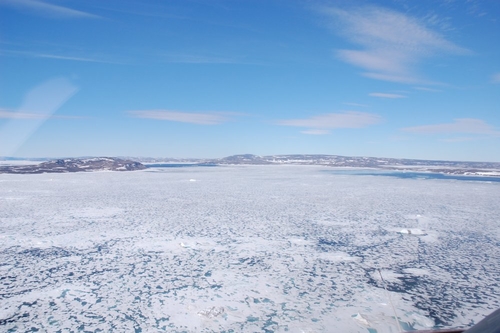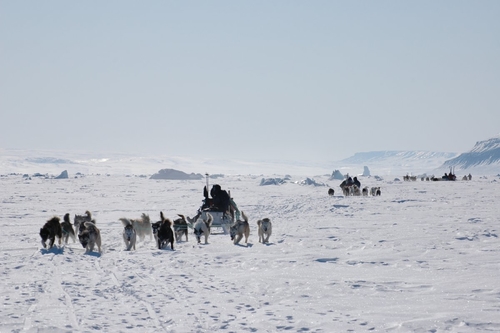New facility for research of sea ice Published 08.07.2011

These weeks a so-called “Sea-ice Environmental Research Facility” (SERF) is being built at the University of Manitoba in Winnipeg, which the Greenland Climate Research Centre in Nuuk has a close working relationship with. The Sea-ice Environmental Research Facility (SERF) will be the first experimental sea-ice facility in Canada. A large out-door sea-ice pond will be built on the campus, and equipped with a suite of state-of-the-art analytical instruments.
By fabricating and growing sea ice under various controlled conditions, microcosm-scale studies will be carried out at SERF to enhance our fundamental understanding of the complex interactions across the ocean-sea ice-atmosphere interface. Along with the parallel field studies onboard the Canadian Research Icebreaker Amundsen in the Arctic Ocean, experimental studies at SERF will improve our ability to predict the impact of the rapid sea-ice loss on climate, on transport and biogeochemical cycles of greenhouse gases and contaminants, and on human use of sea ice.
Sea ice covers approximately 7 % of the Earth’s surface in winter. Its formation, growth, and melt profoundly affect physical and biogeochemical processes operating across the ocean-sea ice-atmosphere interface. The rapid decline of the aerial extent of summer sea ice is one of the most visible features of global-scale climate change. If the current trend continues, the Arctic will become seasonally ice free in the foreseeable future, a condition that has not occurred for at least 1 million years. Its impact on the global climate, the health of Northern ecosystems, the well-beings of the indigenous people, socioeconomic development, geopolitics, and sovereignty cannot be overstated.
When the plant comes into operation during 2011-12, it will for each refill hold approx. 400 m3 of fresh water that is mixed with approx. 7 tons of salt I order to get a salt concentration corresponding to the actual conditions in the ocean.
Researchers at the Greenland Climate Research Centre gets through a partnership with the University of Manitoba direct access to the SERF facility and the research ship “Amundsen”.
SERF facility is funded by the Canada Foundation for Innovation (CFI), the Manitoba Innovation Fund and the University of Manitoba. The project is led by Drs. Fei Wang, Tim Papakyriakou, David Barber and Soren Rysgaard.
SERF is funded by the Canada Foundation for Innovation (CFI), the Manitoba Innovation Fund, and the University of Manitoba. The project is led by Drs. Fei Wang, Tim Papakyriakou, David Barber and Søren Rysgaard.

Sea-ice Environmental Research Facility, University of Manitoba, Winnipeg. Foto: Feiyue Wang

Summer sea ice at Danmarkshavn, North-East Greenland. Photo: Peter Schmidt Mikkelsen

Dog sledges at the winter sea ice at Carlsberg Fjord, East Greenland. Photo: Peter Schmidt Mikkelsen

